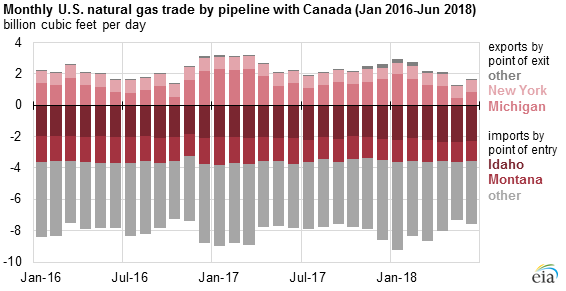

From 2005 to 2017, the shale revolution lowered energy-related greenhouse gas emissions (GHG) by 527 million metric tons per year, contributing to a greater decline in GHG emissions relative to the size of the economy in the United States (-29 percent) than in the European Union (-21 percent) over that period. The report also documented how innovation can lead to greater environmental benefits than those sought through regulations. These savings are experienced by all consumers, but they represent 6.8 percent of income for the poorest fifth of households compared to 1.3 percent for the richest fifth of households (figure 1). consumers $203 billion annually, or an average of $2,500 for a family of four. Because of these price decreases, CEA estimates that the shale revolution saves U.S. Shale-driven improvements also reduced the global price of oil by 10 percent. CEA estimates that shale-driven improvements in energy productivity reduced the domestic price of natural gas by 63 percent and led to a 45 percent decrease in the wholesale price of electricity. From 2007 to 2019, innovation in shale production brought an eight-fold increase in extraction productivity for natural gas and a nineteen-fold increase for oil. In a recent report, the Council of Economic Advisers (CEA) highlighted the benefits of oil and gas innovation. Action taken by the Trump Administration has supported both stronger-than-expected coal and LNG exports and renewable energy capacity. In 2019, driven by shale, Texas was the fourth largest crude oil producer in the world. Texas and New Mexico, home to the historically productive Permian Basin, first discovered in 1920, helped lead a revolution in shale oil and natural gas production resulting in substantial economic and environmental benefits for the United States. Innovations in this sector benefit Americans by boosting productivity and reducing energy prices for consumers, and has just in the last year led America to become a net exporter of petroleum (crude oil and refined) products for the first time since 1949.Īdditionally, in 2017 the United States became a net exporter of natural gas on an annual basis for the first time since 1957. Proponents of these investments say LNG and other gas exports will help alleviate the United States' gargantuan trade deficit.The Trump Administration’s focus on deregulation and innovation has taken energy dominance to new levels. More projects are coming in Corpus Christi, Texas elsewhere in the Gulf of Mexico region and at Georgia's Elba Island. Dominion Energy's Cove Point LNG in Maryland will be in service by the end of this year, the company says. Freeport LNG south of Houston expects to begin liquefaction and shipments in late 2018 or early 2019. That facility is now poised to expand export capacity. With new pipeline and LNG export capacity coming online soon, the United States should close out 2017 as a net exporter of natural gas, a situation that hasn't been seen since 1957, according to EIA.Ĭheniere Energy's Sabine Pass became the first major LNG exporting hub to commence shipments since the shale gas boom. That means the United States sold more gas to foreign trade partners than it imported for four of the first six months of the year. New Census Bureau data show that, by value, the United States was again a net exporter in June 2017, selling about $593 million worth of natural gas to the world while importing $566 million via gas pipelines from Canada and as liquefied natural gas. While imports of gas are flat or falling, exports continue to rise, and the data give weight to government analysts' conviction that the United States is on track to become a net energy exporter, possibly as soon as within a decade.ĮIA noted in a report yesterday that during the first half of 2017, the United States exported more natural gas than it imported in three of the first five months. That's according to data from the Census Bureau and the U.S. The United States is rapidly becoming a net exporter of natural gas for the first time in 60 years.

With new pipeline and LNG export capacity coming online soon, the United States should close out 2017 as a net exporter of natural gas, a situation that hasn't been seen since 1957, according to EIA."

"New Census Bureau data show that, by value, the United States was again a net exporter in June 2017, selling about $593 million worth of natural gas to the world while importing $566 million via gas pipelines from Canada and as liquefied natural gas.


 0 kommentar(er)
0 kommentar(er)
